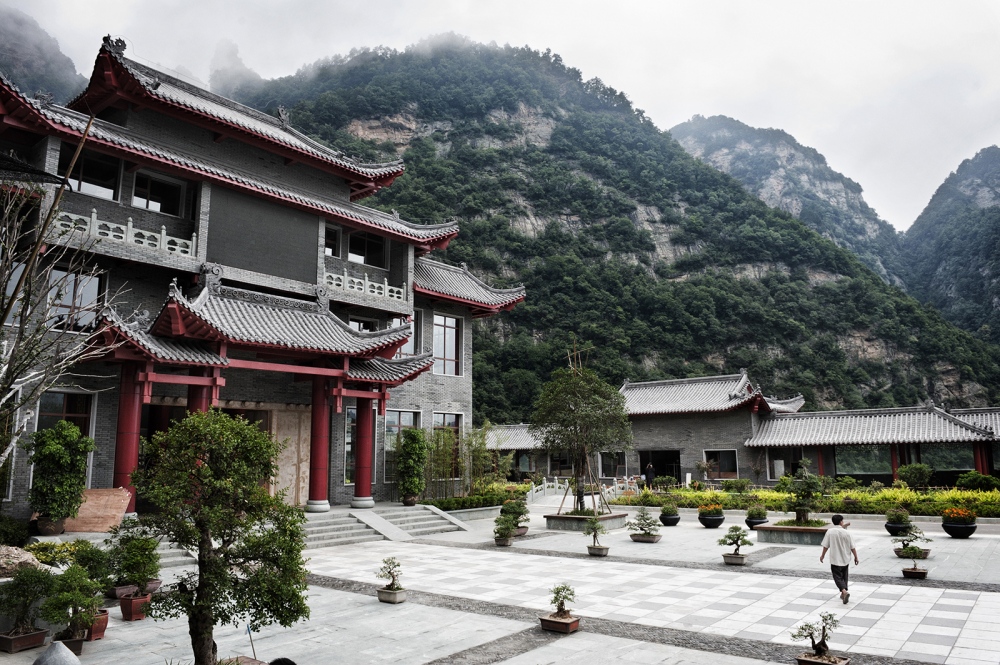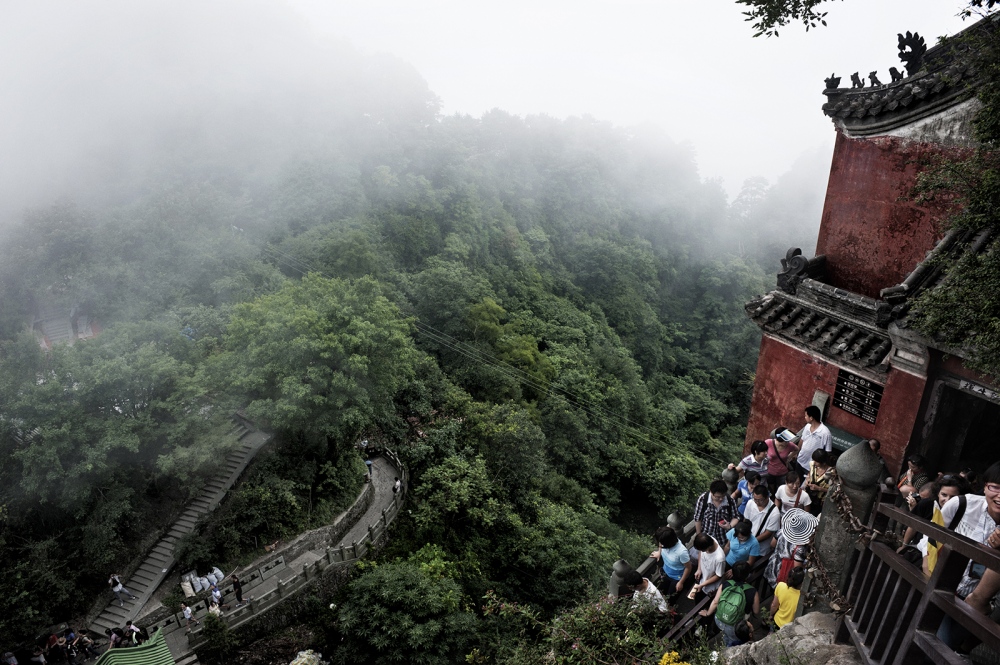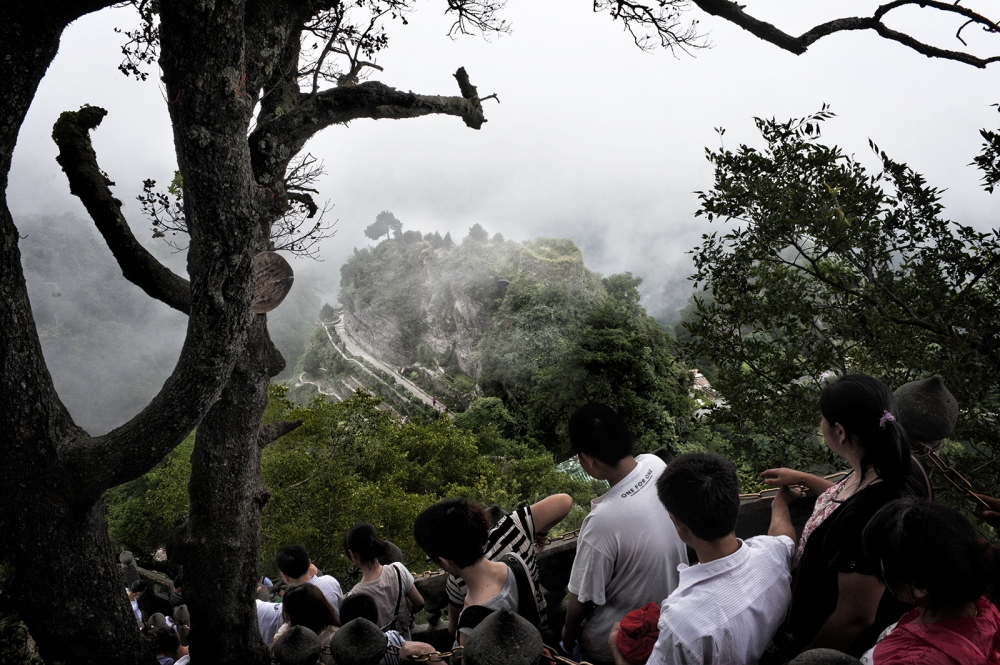Wudang Mountains (Wudang Shan), also known as Wu Tang Shan or simply Wudang, consist of a small mountain range located in the north-western part of Hubei Province in China, just south of Shiyan city.
Wudang Shan is a sacred place, a pilgrimage destination for the devoted Taoists, and represents one of the most important tourist attraction in China.
These mountains have been famous since ancient times for the presence of many Taoist monasteries, renowned as centres of academic research, teaching and meditation practicing, Chinese "inner" martial arts, traditional Chinese medicine as well as Taoist practices and arts related to agriculture.
Wudang Mountains consist of 72 peaks: the highest, 1613 metres high, is the Tianzhu ("Reaching Heavens") Peak.
From the top where it is located the magnificent and often crowded Golden Pavilion, the view opens onto the mountain ranges looking as small islands floating on the clouds, while in the distance the mountain paths draw the silhouette of a dragon flying through the thick forest.
The great ancient pharmacologist Li Shizhen (1518 - 1593) used to pick medicinal herbs there for study purposes and in his most famous work, the "Bencao Gangmu" (Compendium of Medical Matter), he illustrated the use of more than 1800 types of herb medicines whereof 400 grew on Wudang Mountains.
Since the Han dynasty (206 B.C.-220 A.D.) sacred mountains have been attracting the attention of the Emperor, but the first temple was built during the Tang Dynasty (618-907 A.D.). Among the buildings expanded during the Ming Dynasty (1368 - 1644), there was some dating back to the 7th century. The temple complex has a great artistic value, since it expresses the height reached by Chinese art and architecture in about 1000 years of time.
The building construction on Wudang reached its peak during the Ming Dynasty, when Taoism was the official cult in the country. At that time there were about 400 monks in Taoist temples.
In 1413 Emperor Yongle sent government officers to Wudang Mountains to oversee the construction works. For about ten years, every day 300,000 soldiers and labourers had been working into the construction sites.
33 independent groups of buildings, 39 bridges and a total of 20,000 apartments were then completed.
The total building area covers 1.600.000 square meters.
The structure of the buildings is based on the philosophical principles taken from the Taoist accounts saying that Laozi, officially seen as the founder of Taoism, had became immortal after many years of practice. These buildings also represent the symbiosis between political and theological power.
Each group was built in harmony with the trend of the peaks, ravines, cliffs, slopes and valleys of Wudang Mountains.
During the Cultural Revolution (1966 - 1976), which was implemented with a capillary removal and disposal of religions, the temples were looted, damaged, destroyed and forgotten for many decades.
With the revival of Taoism the religious activities have been recently resumed and some temples, rebuilt or restored, are active again and forming new communities of monks. Some monasteries have organized themselves into an association: the Taoist Church of Wudang Mountains.
In June 2005 a number of monastic communities and spiritual masters who had moved to Taiwan to escape persecution were allowed to return to the temples, which are now inside the list of UNESCO World Heritage Sites.
Edoardo Lucci
Photographer
The Path of the Dragon
Public Story
The Path of the Dragon



































